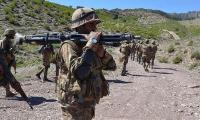Entering Singapore’s Changi Airport gives the visitor a glimpse of a mask fetish. Security guards wear it. As do the nurses and the various personnel who man cameras like anti-aircraft batteries, noting the approaching passenger in transit with due suspicion.
The passenger, in turn, wishes to avoid showing anything that might be construed as a suspect symptom. Whatever you do, do not cough, splutter or sweat in nervousness. Best to wear a mask then: neither party can accurately gauge the disposition of the other.
Witnessing the profusion of disease paraphernalia furnishes us a salient reminder that opportunity lurks where fears of a pandemic lie. Pharmaceutical companies await a rush for certain drugs that might come in handy battling the next pathogen; producers of equipment that might stem the advantage of the viral monster tick off orders to satisfy demand. In the case of the Coronavirus, now given its “novel” title as COVID-19, a global symbol of its stretch and influence, actual or otherwise, is the face mask.
In parts of Southeast Asia and in China, the mask was already ubiquitous. Preventing particles and dirt from entering the respiratory system, such layers provide a modicum of protection against such undue inhalation. But the coronavirus “business” has seen their purpose obscured in favour of solutions that are, at best, varnished hopes or selfish aims.
The Occupational Safety and Health Administration, for instance, insists in a factsheet on respiratory infection control that, “Surgical masks are not designed to seal tightly against the user’s face. During inhalation, much of the potentially contaminated air can pass through the gaps between the face and the surgical mask and not be pulled through the filter of the mask.”
The advisory does, however, claim that using surgical masks “may reduce the risk of infectious disease transmission between infected and non-infected persons”, conceding that “historical information” on their effectiveness in controlling, for instance, influenza, remains limited.
The US Centers for Disease Control and Prevention has also warned against donning the facemask in unnecessary circumstances. “CDC does not recommend the people who are well wear a facemask to protect themselves from respiratory viruses, including 2019-nCoV. You should only wear a mask if a healthcare professional recommends it.” Only those exposed to the virus and showing symptoms should wear one. Those involved in providing health services, be they health workers “and other people who are taking care of someone infected with 2019-nCov in close settings (at home or in a health care facility)” are also encouraged to wear them.
Similar views can also be found in assessments from biosecurity wonks such as Professor C Raina MacIntyre of the Biosecurity Program at the Kirby Institute based at the University of New South Wales. In a co-authored piece for The Conversation, MacIntyre takes some gloss off the use of such preventive measures by noting that surgical masks “do not provide a seal around the face or filtration of airborne particles, like those that may carry coronavirus.” But some “limited barrier against you transferring the virus from your hand to the face, or from large droplets and splashes of fluid” is provided.
The aims behind such use are distinct. Use them for evacuation flights out of the disease zone. Use them in cities where ongoing transmission is taking place. But in areas where there is no crisis to speak of, extensive use or stockpiling by members of the general public can only be deemed to be disproportionate. In the words of MacIntyre and her co-author Abrar Ahmad Chungtai, “countries where transmission is not widespread and there are only a handful of cases being treated in hospital isolation rooms, masks serve no purpose in the community.”
Again, as with their colleagues in the field of medical science, the issue was different for those at the coal face of disease prevention. Health workers had to be preserved; “if they get sick or die, we lose our ability to fight the epidemic.”
The literature on the effectiveness of such masks can be found, though littered with the necessary caveats that come with the field. A study examining facemask usage and effect in reducing the number of influenza A (H1N1) cases published in 2010 used mathematical modelling to conclude that, “if worn properly”, they could constitute “an effective intervention strategy in reducing the spread of pandemic (H1N1) 2009.”
The central purpose, then, is for the mask to act as some sort of diligent disease concierge: to keep the germs in while ensuring that particles and matter, be they dust or blood, are kept out. But commercial instinct is indifferent to such nuances. Where there is money to be made and social media accounts to be co-opted, along with those vulgar irritants known as “influencers”, the issue is making the product appealing, not questioning its use.
Excerpted from: ‘Fashion Fetishism, Surgical Masks and Coronavirus’.
Courtesy: Counterpunch.org
Economic nationalism remains potent political narrative, influencing both Republican and Democratic platforms
Yes, blockchain, decentralised and distributed ledger technology, is foundational backbone of cryptocurrencies
Blue carbon covers merely 2.0 per cent of ocean surface but absorbs 50 per cent of carbon dioxide
During WWII, Japan’s economy and national morale were plummeted by its doomed alliance with Germany
More than 40 persons, including women and children, were killed in Parachinar
After November 30, it will be impossible for ordinary internet users to access all banned websites, including X







